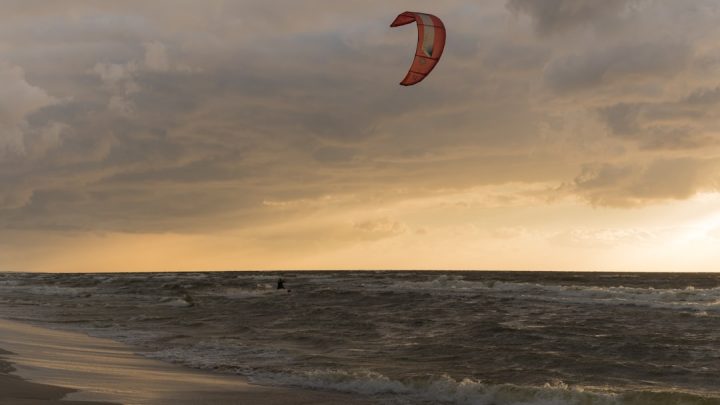Modern software development has increasingly embraced lifestyle integration, a holistic approach that balances intense coding sessions with rejuvenating recreational activities. The concept of Vibe Coding with Windsurf represents a compelling fusion—blending the mental agility of programming with the dynamic energy of windsurfing. This hybrid lifestyle aims not only to increase productivity but also to foster long-term wellness and creativity among developers.
The Emergence of Lifestyle-Based Coding Practices
During the past decade, the tech industry has witnessed a significant shift towards more flexible and experience-rich working environments. Traditional office walls have given way to co-working spaces by the beach, remote forest cabins, and even surf towns. This transformation is driven by the recognition that sustainable software development requires more than just hard work—it demands mental clarity, creative openness, and physical vitality.
One emerging trend seizing attention is so-called “vibe coding”: the practice of coding in environments that spark positive energy, often blended with physical activities like yoga, hiking, or surfing. Windsurfing, in particular, stands out as a synergistic partner for coders due to its balance of physical precision and meditative flow state.
Why Windsurf?
At first glance, windsurfing might seem unrelated to software engineering. However, upon deeper examination, it becomes clear that both activities engage the brain and body in complementary ways:
- Focus and Flow: Just as debugging complex code demands intense concentration, controlling wind direction and balance on a board requires being fully present in the moment. Both can induce flow states, which enhance creativity and problem solving.
- Pattern Recognition: Programmers often spend hours identifying patterns or breakdowns in logic. Similarly, windsurfers must read wind conditions and wave patterns to adapt their technique, sharpening their situational analysis.
- Mental Refresh: Physical activity helps flush mental fatigue. After 30 minutes on the water, many developers report returning to their laptops re-energized and primed for deep work.
The rhythmic alignment between the two disciplines provides a compelling argument for integrating windsurfing into the programming routine, especially for freelancers and remote developers who control their environment and scheduling.
Setting Up the Ideal Vibe Coding + Windsurf Workspace
To effectively combine these two worlds, one needs to optimize both the physical and digital setups. The ideal location is near a coastline that offers reliable wind and water conditions, with infrastructure to support remote work. Here are the essential components of a successful hybrid environment:
Hardware Essentials
- Rugged Laptop: Preferably with long battery life and sealed for resistance to sand and moisture.
- Portable Wi-Fi Hotspot: Essential for maintaining connectivity in off-grid areas.
- Solar Charger: Renewable energy options ensure you’re not shackled to indoor charging points.
- Noise-Canceling Headphones: For focused coding sessions, especially in windier locations.
Windsurfing Gear
- Lightweight Rig: Easy to transport and set up, particularly if moving between locations.
- Quick-Dry Wetsuit: To get back to coding sessions without prolonged discomfort.
- Waterproof Storage: To protect electronics while you’re on the water.
Daily Routine for a Balanced Lifestyle
Establishing a rhythmic routine can help maximize the benefits of this hybrid approach. A sample daily schedule might look like this:
- 6:30 am – 8:00 am: Windsurf in calm morning conditions, warming up both body and mind.
- 8:00 am – 9:00 am: Light breakfast and planning the day’s tasks.
- 9:00 am – 12:00 pm: Deep coding work executed with high focus and minimal distractions.
- 12:00 pm – 1:00 pm: Lunch and short recovery walk along the shore.
- 1:00 pm – 3:00 pm: Client meetings, code reviews, or collaborative tasks via video calls.
- 3:00 pm – 4:30 pm: Optional second windsurfing session or alternative outdoor activity.
- 5:00 pm onwards: Reflective planning, light debugging, and leisure time.
This blend of activity and resting mental cycles aligns with principles from neuroscience and behavioral psychology, underscoring sustained cognitive performance over longer time horizons.
Psychological and Professional Benefits of Vibe Coding
Vibe coding isn’t merely a lifestyle indulgence—it carries measurable benefits for personal well-being and professional output. Studies in neuroergonomics suggest that alternating between intense cognitive work and physical motion helps maintain neurological resilience. Here are specific advantages:
- Burnout Prevention: Incorporating joyful breaks like windsurfing prevents chronic stress, a known contributor to programming fatigue.
- Creative Problem Solving: Physical movement triggers default mode network activation, increasing the chance of breakthrough ideas.
- Higher Output Quality: Developers working in relaxed environments often report fewer bugs and more thoughtful code structures.
Over time, this lifestyle can support not only individual sustainability but also enhance team cohesion when embraced across collaborative projects—especially in distributed teams practicing asynchronous workflows.
Challenges and How to Overcome Them
No lifestyle is without its trade-offs. Embracing a windsurf-coding hybrid life presents logistical, environmental, and social challenges that need to be addressed.
Key Challenges
- Unpredictable Weather: Windsurfing depends on daily weather conditions. Having flexible tasks (e.g., documentation, planning) for windless days helps maximize productivity.
- Connectivity Issues: Remote beach settings may lack stable internet. Investing in satellite internet or bonding cellular networks can offer reliability.
- Work-Life Boundaries: Overlapping work with recreation can lead to blurred boundaries. Using focused time blocks and sticking to routines ensures balance.
Solutions
By preparing alternate coding tasks and setting realistic expectations with colleagues and clients, many of these potential pitfalls can be reduced or even completely avoided. Additionally, forming local coding communities or co-living spaces in coastal regions can introduce structure while maintaining the lifestyle’s liberating aspects.
Conclusion
Vibe Coding with Windsurf is more than a whimsical notion—it’s a transformative convergence of modern work philosophies, cognitive science, and the human desire for nature-connected living. In an era where burnout and remote work fatigue are on the rise, such integration may very well be the antidote.
This lifestyle isn’t suited to every developer or team, but for those with flexibility—to travel, to redefine routines, and to experiment with workflow—combining code and board could mark the next wave of balanced, sustainable productivity. As long as wind and Wi-Fi remain in abundance, the vibe coding revolution is just getting started.
